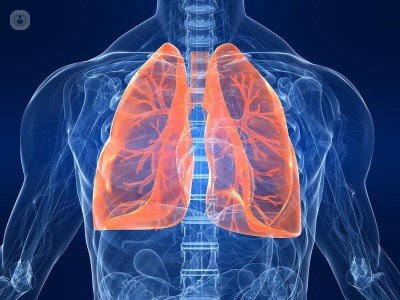


What is it?
Video-assisted thoracoscopic surgery (VATS) is a minimally invasive technique which allows the doctor to look at your pleural cavity. VATS makes it possible to identify, diagnose and treat many types of chest and lung conditions.

What does it involve?
VATS involves the use of state-of-the-art fibre-optic scopes and specially-trained healthcare professionals. The surgery is performed by making up to three small incisions in your chest. A small camera and surgical tools are then inserted through the incisions. The camera allows the surgeon to look into your chest and see exactly what they are doing while performing the procedure.
Trauma from the procedure is minimal, as VATS doesn’t involve any major cuts into the ribcage. This makes the whole procedure virtually painless, and post-operative recovery is much smoother compared with traditional thoracoscopy. After the surgery you may have one (or, in more rare cases, two) chest drains placed where the incisions were made.
Why is it performed?
Video-assisted thoracoscopic surgery can be performed in several situations, ranging from diagnosing benign conditions to tumours. It can be used to prepare for surgery, for example when it is necessary to perform a lung resection, or in case there are some masses which need to be removed inside the chest cavity.
VATS is extremely helpful for diagnosing pleural disorders (pleural effusion), conditions affecting the pulmonary interstitium (fibroids, granulomatous disease) and pulmonary nodules (also known as coin lesions), which may cause a tumour. This technique can also be used for carrying out a lymph node biopsy or for a mediastinal mass biopsy (the area in between the lungs).
In terms of surgical procedures, VATS can be used in a number of lung surgeries including:
- lobectomy
- segmental resection
- atypical resection
- lung decortication
- removal of bullae resulting from emphysema
- surgery of the thymus (thymus removal or tumours originating from the thymus)
Finally, VATS can be used in treating severe infections.
How can I prepare for it?
Depending on the type of surgery required, you may need a local or general anaesthetic, so before the operation the anaesthetist will meet with you to determine your suitability for anaesthetic.
You should also inform the surgical team if you have problems with your back or any condition that would make it difficult for you to lie on your side during the operation.